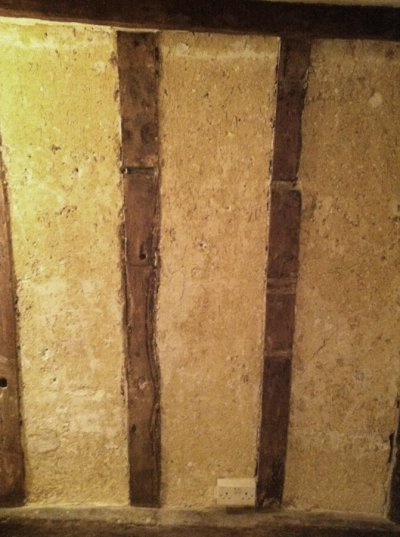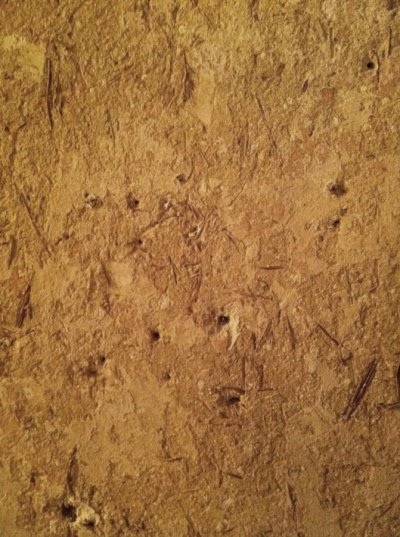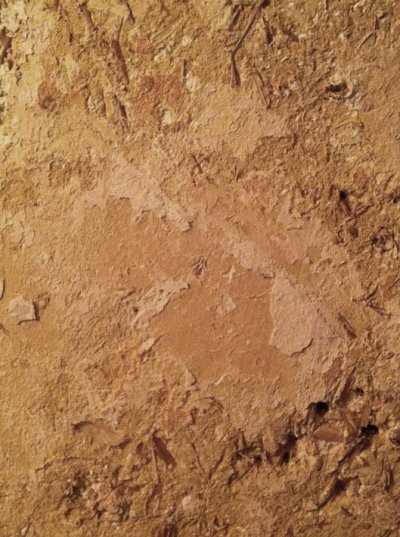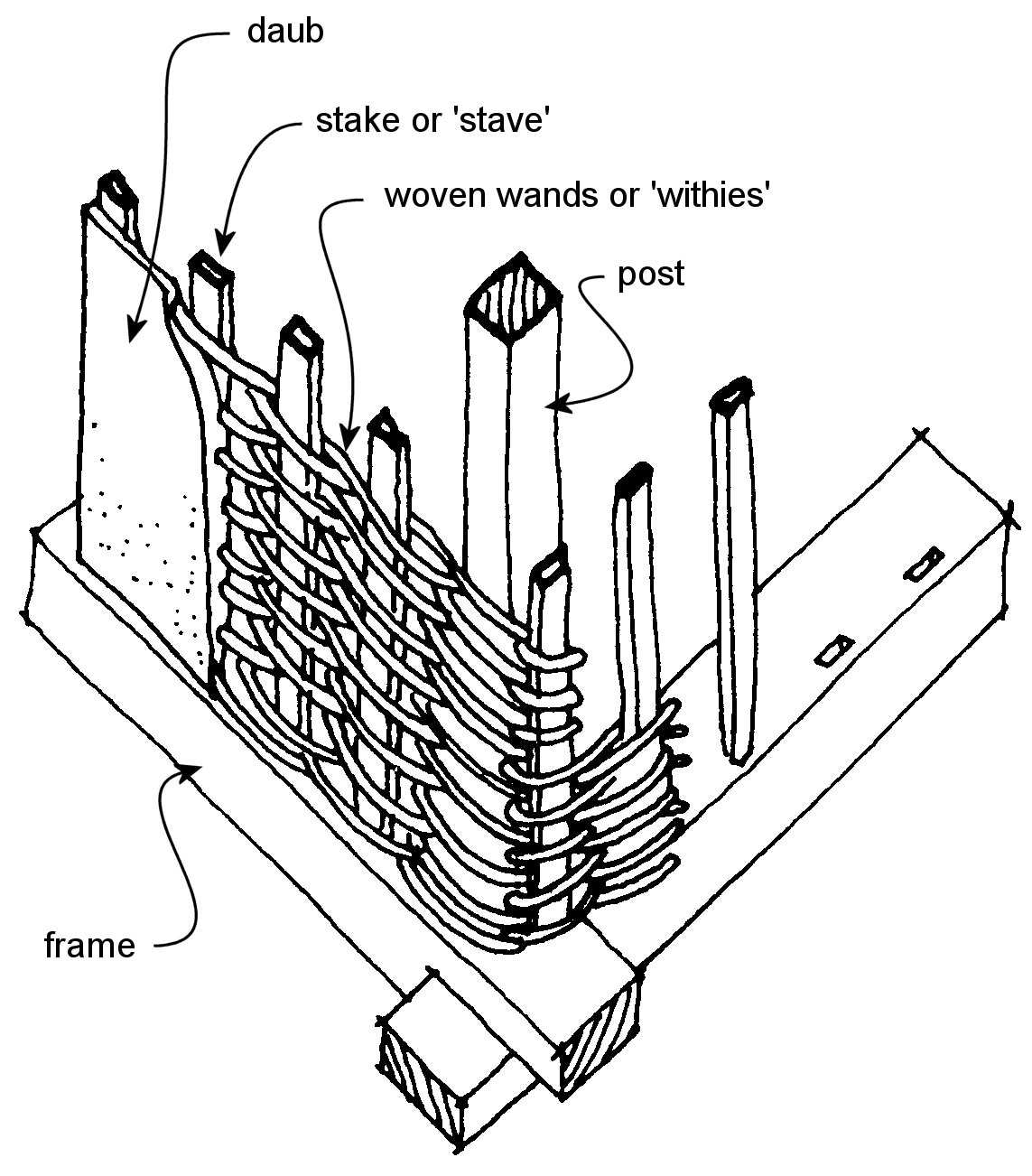Hi, bit of expert identification needed if possible please. All our internal and external walls have been loving covered in gypsum plaster and cement render. This is cracking and falling off in places, so Ive finally bitten the bullet and decided to deal with it head on.
Ive removed the plaster from one wall, and much to my surprise it came off like a dream, in large sheets, and was barely bonded to the wall behind. Now I was expecting to find lath/metal mesh behind it, as this is visible in a couple of exploration holes I'd made previously. Instead the infill panels are what I assume to be clay lump or wattle and daub.
The panels seem to be rock hard, and the other side of the wall is plaster-boarded over and inaccessible at the moment as its in the kitchen which Im forbidden from messing around with until Ive actually finished one room at least! The infill panels seem to be pretty thick from where I can see into a gap next to one of the timbers, I'd say approx 6 inches of solid material, then I can just make out the what may be lath or wattle.
There seems to be the residue of a little lime plaster in places, but not very much at all, and the surface is in excellent condition, so Im wondering if it would have ever been plastered over or maybe just limewashed? Now Ive uncovered it it would seem a shame to cover it in plaster as its an attractive surface, so would it be advisable to limewash directly onto it or should I be giving it a skim of lime plaster to protect it?
On a slightly separate note, would I be foolish to attempt to lime plaster (this and also some lathe walls of which the majority will probably be) myself with no experience, or is it very much a job for the professional. It's a 16th Century suffolk cottage, so I wouldn't be wanting a pristine flat finish, but I would like it to be solid enough to stay intact and not look like the daubings of a madman!
Pictures attached, any advice appreciated!



Ive removed the plaster from one wall, and much to my surprise it came off like a dream, in large sheets, and was barely bonded to the wall behind. Now I was expecting to find lath/metal mesh behind it, as this is visible in a couple of exploration holes I'd made previously. Instead the infill panels are what I assume to be clay lump or wattle and daub.
The panels seem to be rock hard, and the other side of the wall is plaster-boarded over and inaccessible at the moment as its in the kitchen which Im forbidden from messing around with until Ive actually finished one room at least! The infill panels seem to be pretty thick from where I can see into a gap next to one of the timbers, I'd say approx 6 inches of solid material, then I can just make out the what may be lath or wattle.
There seems to be the residue of a little lime plaster in places, but not very much at all, and the surface is in excellent condition, so Im wondering if it would have ever been plastered over or maybe just limewashed? Now Ive uncovered it it would seem a shame to cover it in plaster as its an attractive surface, so would it be advisable to limewash directly onto it or should I be giving it a skim of lime plaster to protect it?
On a slightly separate note, would I be foolish to attempt to lime plaster (this and also some lathe walls of which the majority will probably be) myself with no experience, or is it very much a job for the professional. It's a 16th Century suffolk cottage, so I wouldn't be wanting a pristine flat finish, but I would like it to be solid enough to stay intact and not look like the daubings of a madman!
Pictures attached, any advice appreciated!






